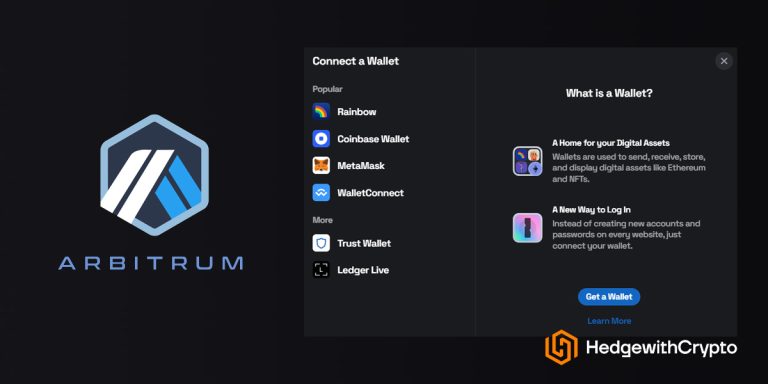What Are The Different Types of Blockchain Nodes?
Blockchain nodes can be one of the most difficult concepts for beginners to understand. However, learning about the ten most common types of nodes can help investors decode how certain blockchains function.
Key Takeaways:
- Blockchain nodes are like independent blockchain servers responsible for validating transactions and securing the network
- Nodes are a key element of how blockchains are decentralized, spreading data across a web of node operators
- Full nodes are the most common form of node, and the term is often used interchangeably with “blockchain nodes”
- Those operating a node can receive block rewards, a financial incentive to help secure the blockchain network
TABLE OF CONTENTS
“Blockchain nodes” isn’t exactly a household term. While most consumers have heard of “Bitcoin”, “crypto” and the “blockchain”, there are far fewer that know about nodes. However, it is vital for those with a desire to navigate the Web3 world and get the most out of their crypto assets to understand the different types of blockchain nodes.
Not only does it help investors participate in potentially lucrative earning opportunities, but it also provides valuable insight into how cryptocurrencies work. This guide will explore the ten most well-known types of blockchain nodes, what their differences are, and which protocols use them.
Featured Partner

Binance
Rated #1 Crypto Exchange Worldwide
4.8 out of 5.0
Binance is undoubtedly one of the most trusted exchanges with a feature-rich ecosystem for beginner and experienced investors. Rated #1 worldwide for customer service and users. Sign up and claim up to $300 USD in bonuses.
385+
USD, EUR, GBP, AUD, CAD, +22 Others
Bank transfer, SWIFT, SEPA, debit and credit card
0.1% (spot) and 0.02% / 0.04% (Futures)
This Is What A Blockchain Node Is
Blockchain nodes are a key element for the operation of a cryptocurrency network. A blockchain protocol works by grouping together transactions in a “block”, validating that they’re legitimate, and then chaining that block to the network’s database. In this scenario, “nodes” are responsible for verifying that new transactions are legitimate and keeping a copy of the network’s historic data updated on a server.
The Different Types Of Blockchain Nodes
There are many different types of blockchain nodes, some unique to specific and obscure crypto networks. In this guide, we will explore the ten most popular nodes that investors are most likely to come across in their DeFi journey.
1. Full Nodes
Full nodes are generally synonymous with “blockchain nodes” and are the most important and prominent type of nodes. They are the lifeblood of most blockchain networks. In simple terms, full nodes are copies of the blockchain being run on independent computers all over the globe. These servers are often required to be operating 24/7, as they are responsible for several actions vital to the health of a blockchain:
- Validating new transactions
- Validating blocks and adding them to the chain
- Maintaining a record of the network’s block history
- Communicating with other full nodes to ensure that there are no discrepancies in the network’s data
- Ensure that new transactions and other nodes are complying with the rules coded into that specific network
Full nodes must juggle security, storage, and validation – generally making them the most resource-intensive to run. There are two types of full nodes – pruned and archival.
2. Pruned Full Nodes
Pruned full nodes impose a memory limit on the node and only track data from recent transactions. First, pruned full nodes download an entire copy of the blockchain (and its history) onto a hard drive. Then, beginning at the genesis block, they delete old data block-by-block until the node is storing less than the limit.
For example, a Pruned full node with a storage space of 1GB would delete blocks until the blockchain data on the hard drive is smaller than this amount.
3. Archival Full Nodes
Archival full nodes are what most people mean when they say “full nodes”. The name of this type of node gives away its primary purpose – they are an archive of data. These nodes download an entire copy of the blockchain onto a hard disk without any memory limits. This means that data from all transactions ever made on the network are stored on an archival full node.
Archival full nodes are actually an umbrella term for several other types of nodes – authority, miner, staking, and master. For a comparison of the differences between staking and mining, read this guide next.
4. Authority Nodes
Most blockchains are public, open-source, and decentralized. On such networks, anybody (that meets certain financial and hardware requirements) can simply download software, sync across data and start running a node.
However, private, or semi-centralized blockchains restrict who can access the blockchain’s data. On such networks, authority nodes are operated by a select few – often those involved with the blockchain’s development. Authority nodes can halt, control and limit other, generic nodes from accessing the blockchain and its associated data.
5. Miner Nodes
Miner nodes are directly linked to the Proof-of-Work consensus mechanism. This method of creating new blocks requires participating nodes to solve a complex string of mathematical problems. The first node to complete the puzzle can approve any incoming transactions, add the next block to the chain and receive a reward. Often, businesses will operate hundreds of nodes that work together to give themselves the best chance of earning a block reward. Such setups for Bitcoin are typically called “mining pools”.
6. Staking Nodes
Staking nodes are the nodes used to secure Proof-of-Stake networks like Ethereum and Cardano. To open and run a staking node, the operator (commonly called a “validator) must lock up a certain amount of cryptocurrency in a smart contract as collateral. This ensures they have a vested interest in the blockchain’s performance and discourages them from acting maliciously.
Every time a PoS protocol is ready to create a new block, it will algorithmically select a staking node to approve the next transaction and receive a reward. Some PoS networks choose validators completely at random, whereas others will use weighted metrics like collateral deposited or the amount of time spent with the node online.
Related: How to stake cryptocurrency.
7. Masternodes
Masternodes are a type of full node that has lots of responsibilities, but not much power. These nodes primarily archive and access historical transaction data, as well as verify new transactions. However, masternodes cannot create new blocks on the chain and usually split block rewards with other node operators such as miners or validators. Dash and Syscoin are two major blockchains that use masternodes.
8. Light nodes
Light, or lightweight nodes, are exactly what their name suggests – a lightweight version of a full node. Whereas archival full nodes download an entire copy of the blockchain onto a hard drive, light nodes only install data and software that is essential (a block header).
Light nodes communicate incoming transactions to full nodes but can only verify if a certain transaction is included in a block rather than validating an entire block. Therefore, light nodes are useless without full nodes and are typically used to improve network scalability and transaction speeds, rather than security and decentralization. Many blockchains use light nodes, including Ethereum and Bitcoin, which are one of the factors that make their blockchains secure.
9. Lightning nodes
Lightning nodes exist on a secondary layer that runs adjacent to the main blockchain. These nodes validate and confirm new transactions off-chain to help remove network congestion. Once the new transactions are verified as legitimate off-chain, they are bundled up and added to the main blockchain.
Lightning networks are their own mini-blockchain – while they rely on an underlying network to operate, but are considered a standalone blockchain. Bitcoin’s protocol has a Layer 2 Lightning Network, which has helped reduce transaction fees and confirmation times.
Related: The 9 best lightning wallets.
10. Supernodes
Supernodes are a relatively rare form of the node that most DeFi users are unlikely to encounter. These nodes are tailor-made to fulfill specific tasks – they tend to have little to do with validating transactions or adding new blocks to the chain. Instead, super nodes provide communication services between nodes and might be responsible for maintaining a network, implementing new protocol upgrades, or performing off-chain tasks.
The Purpose Of A Blockchain Node
A blockchain node has several vital purposes for the functioning of a blockchain network. Perhaps the most significant is decentralization. Blockchains, at their very core, are distributed ledgers. This means that instead of relying on one central database – like a bank or a government – they mull through information from hundreds of different sources.
Blockchains achieve this through nodes. Each network typically relies on hundreds, if not thousands, of independent nodes verifying new transactions. This ensures no one actor has majority control over how a blockchain records data and avoids potential double-spending exploits.
Generally, blockchains with more nodes will be more decentralized, and thus more secure than their competitors. For example, DeFi network Ethereum hosts over 11,000 physical nodes and 500,000+ partial nodes (validators). The numbers for Bitcoin are a bit murkier, as some data suggest the blockchain boasts over 100,000 nodes – but many of these are operating an outdated version of the software and are thus invalid.
Nodes are the foundational framework of cryptocurrency’s infrastructure. They are responsible for securing the network and keeping malicious transactions at bay. Every NFT, smart contract, and crypto token sent to and from a wallet requires the use of a blockchain node. Without them, the industry as we know it would fall apart.
How Blockchain Nodes Actually Work
Generally speaking, nodes are programmed to confirm transactions based on majority consensus. This is commonly referred to as a “consensus mechanism”, and each blockchain’s specific mechanism determines the types of nodes it uses and how it executes new blocks. There are many different consensus mechanisms in the crypto industry, but by far the two most common are Proof-of-Work (PoW) and Proof-of-Stake (PoS).
PoW blockchains rely on a web of nodes in competition to solve an extremely complex mathematical problem. These problems can only be completed via brute force, so powerful computer hardware is usually a prerequisite for running a node. The first node to solve the problem gets the privilege of verifying the next block to the chain – and receiving a reward in kind. This process is commonly referred to as “mining” and applies to networks like Bitcoin, Dogecoin, and Litecoin.
PoS blockchains are the most popular chains among new developers, thanks to their superior scalability and energy efficiency compared to their PoW counterparts. Proof-of-Stake networks require node operators to “lock” a certain amount of crypto in a smart contract. The protocol then algorithmically selects a node to validate the next block on the chain. This process is known as “staking” and node operators are frequently referred to as “validators”. Prominent networks like Ethereum, Cardano, and Solana all run on a Proof-of-Stake model.
Related: What does Proof-of-Stake actually mean?
Regardless of which consensus mechanism is used, nodes must be in constant communication with other nodes to ensure their independent copies of the blockchain’s data match. In some instances, every single node running on a network must approve a transaction before it is added to a block. In others, only a few (or even just one) are required.




